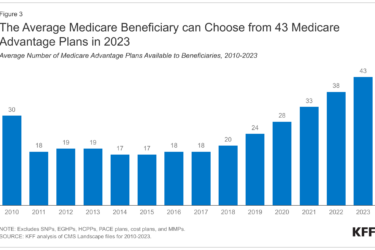
As health insurers adopt population health strategies they find that home-bound patients are the most difficult to reach. Under fee-for-service payment, insurers didn’t need to focus on these patients.
But the combination of the star-rating program that Medicare uses in its Medicare Advantage plans and the need to prevent hospital readmissions means health insurers now are paying extra attention to home-bound patients with chronic illnesses. Typically, these are the 5 percent of patients who account for half of all spending.
Now that health insurers are paying attention to patients who can’t get out to a physician office visit, they are testing strategies to provide home care in the most cost-effective ways.
One method that is worth watching is the Independence at Home demonstration project that the federal Centers for Medicare & Medicaid Services is running. When the program began in 2012, my colleague, Liz Seegert, reported on this project to send physicians into patients’ home. Susan Jaffe also mentioned it in this 2012 tip sheet on innovations in Medicare.
Now, almost four years later, CMS is expected to announce savings from the program’s second year, Susan Jaffe reported for Kaiser Health News. Last year at this time, CMS reported overall savings of $25 million from the program’s first year.
This program is worth watching because many of the home-care programs that health insurers run do not involve sending physicians into patients’ homes because the costs of having physicians care for home-bound patients is prohibitively high.
In the Independence at Home program, CMS is measuring how 14 organizations, including 13 physician practices, are delivering home-based primary care to patients who are chronically ill. Patients must be frail, disabled, and have had previously high health costs, Shannon Firth reported for MedPage Today.
CMS started the program with 17 physician groups serving 8,400 Medicare members. Since then, three physician groups dropped out. Out of the remaining 14 practices, CMS shared savings (PDF) with nine groups, and made payments to those nine groups ranging from $275,000 to almost $3 million.
The participating physicians who meet CMS’ quality goals and save money for the program will share in the savings. One physician group saved $1.2 million, almost $13,600 for each patient in the project, Jaffe reported. A second physician group reduced the average annual cost of care for each patient by $12,000, she wrote.
One group reduced what it spent on members’ care from $5,471 per member per month (PMPM) to $4,404 PMPM. The danger in cutting costs on members’ care is that some members may not get the care they need.
To share in the savings, CMS says the physician groups must have fewer hospital readmissions within 30 days of discharge; have a provider contact a patient within 48 hours of a hospital admission, discharge, or emergency room visit; identify the patients’ medications within 48 hours of a hospital discharge; have a provider document each patient’s preferences; and show that patients with diabetes, high blood pressure, asthma, pneumonia, or urinary tract infections have fewer inpatient hospital stays and ER visits.










